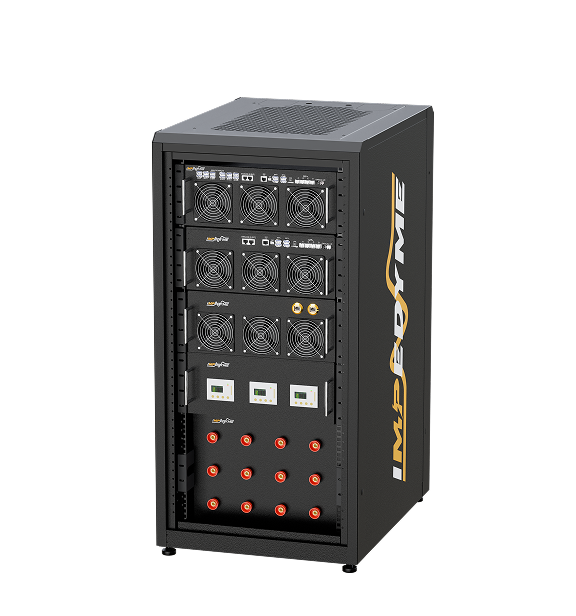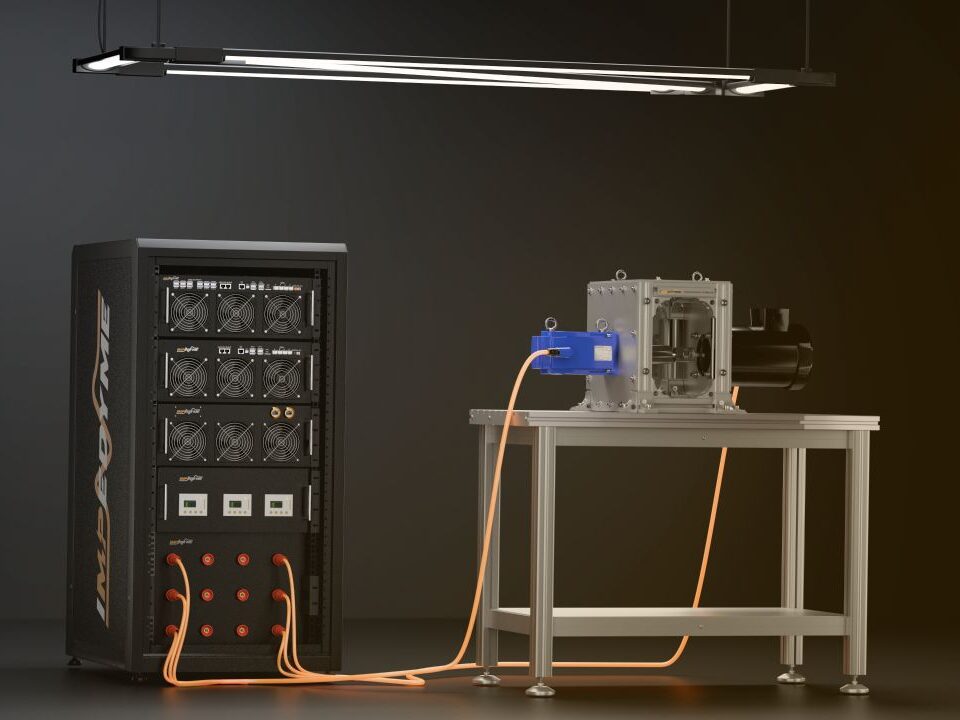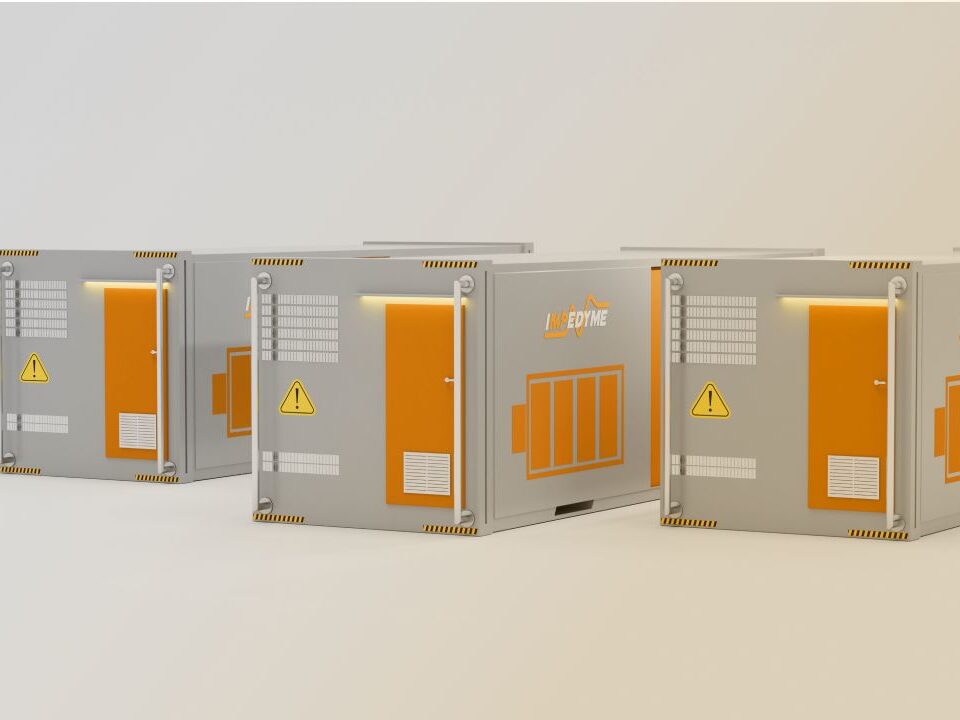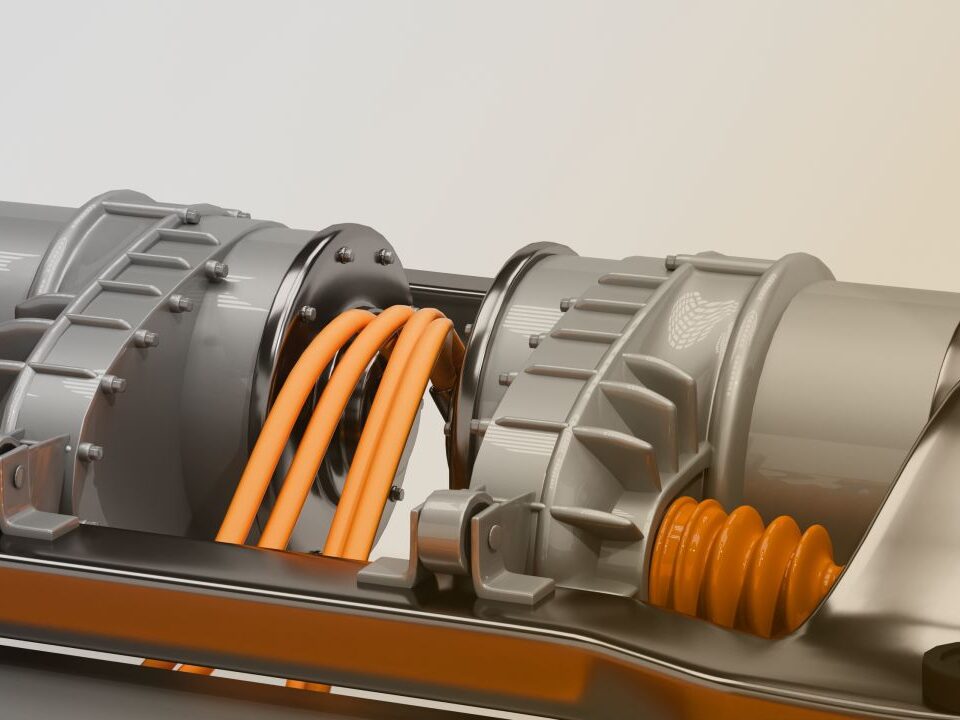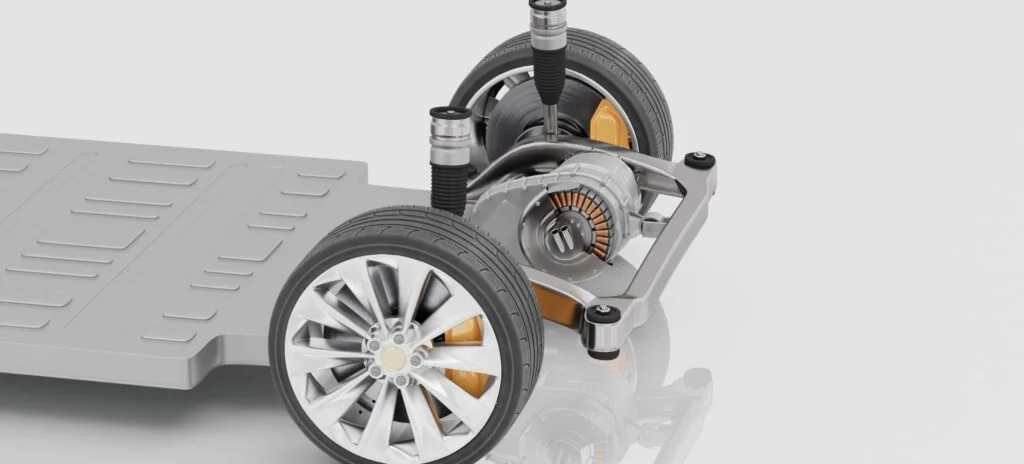
-
 Induction Motor
Induction Motor
-
 Automotive Electrical System Simulation
Automotive Electrical System Simulation
-
 DC/DC Bidirectional Converter
DC/DC Bidirectional Converter
-
 PWM Control for Brushless DC
PWM Control for Brushless DC
-
 BLDC Motor Control and Drive Simulation
BLDC Motor Control and Drive Simulation
-
 Electric Vehicle Fast Charger Simulation
Electric Vehicle Fast Charger Simulation
-
 DFIG Wind Turbine Simulation
DFIG Wind Turbine Simulation
-
 Dual Active Bridge
Dual Active Bridge
-
 EV Dynamometer Test Environment Simulation
EV Dynamometer Test Environment Simulation
-
 Electric Vehicle Simulation
Electric Vehicle Simulation
-
 Three-Phase Grid-Connected Inverter Using Direct-Q…
Three-Phase Grid-Connected Inverter Using Direct-Q…
-
 Three-Phase Grid-Connected Solar Photovoltaic
Three-Phase Grid-Connected Solar Photovoltaic
-
 Grid-Connected Rectifier
Grid-Connected Rectifier
-
 Grid-Tied Inverter System
Grid-Tied Inverter System
-
 Torque Control in a Hybrid Excitation Synchronous …
Torque Control in a Hybrid Excitation Synchronous …
-
 Wye-Delta Starting Circuit
Wye-Delta Starting Circuit
-
 IPMSM-Based Axle-Drive
IPMSM-Based Axle-Drive
-
 Simplified Parallel Hybrid Electric Vehicle
Simplified Parallel Hybrid Electric Vehicle
-
 Simplified Series Hybrid Electric Vehicle
Simplified Series Hybrid Electric Vehicle
-
 Series-Parallel Hybrid Electric Vehicle
Series-Parallel Hybrid Electric Vehicle
-
 Three-Phase Matrix Converter Simulation
Three-Phase Matrix Converter Simulation
-
 Venturini Modulation for Three-Phase Matrix Conver…
Venturini Modulation for Three-Phase Matrix Conver…
-
 Microgrid Frequency Regulation Using Vehicle-to-Gr…
Microgrid Frequency Regulation Using Vehicle-to-Gr…
-
 Three-Phase Modular Multilevel Converter
Three-Phase Modular Multilevel Converter
-
 Field-Oriented Control
Field-Oriented Control
-
 Interior Permanent Magnet Synchronous Generator
Interior Permanent Magnet Synchronous Generator
-
 Permanent Magnet Synchronous Machine
Permanent Magnet Synchronous Machine
-
 PMSM Rotor Angular Velocity
PMSM Rotor Angular Velocity
-
 PMSM-Based Electrical Traction Drive
PMSM-Based Electrical Traction Drive
-
 Maximum Power Point Tracking
Maximum Power Point Tracking
-
 Six-Phase Permanent Magnet Synchronous Machine
Six-Phase Permanent Magnet Synchronous Machine
-
 Synchronous Machine-Based Electrical Drive Simulat…
Synchronous Machine-Based Electrical Drive Simulat…
-
 Single-Stage Solar Inverter
Single-Stage Solar Inverter
-
 Three-Phase Cycloconverter Simulation
Three-Phase Cycloconverter Simulation
-
 Totem-Pole PFC Simulation
Totem-Pole PFC Simulation
-
 Twelve-Pulse Thyristor Rectifier
Twelve-Pulse Thyristor Rectifier
-
 Two-Wheeler On-Board Charger
Two-Wheeler On-Board Charger
-
 Vienna Rectifier Simulation
Vienna Rectifier Simulation
-
 High-Voltage Direct Current
High-Voltage Direct Current
-
 Wireless Power Transfer
Wireless Power Transfer

Comprehensive Documentation for Drive System Implementation using Field-Oriented Control (FOC) of an Induction Motor (IM)
Table of Contents
- 1 Comprehensive Documentation for Drive System Implementation using Field-Oriented Control (FOC) of an Induction Motor (IM)
- 1.1 Introduction
- 1.2 System Overview
- 1.2.1 What is Field-Oriented Control (FOC)?
- 1.2.2 Purpose of the Simulation
- 1.3 Key Features
- 1.3.1 PI Controller-Based Cascade Control Structure
- 1.3.2 Current and Rotor Position Sensing
- 1.3.3 Field Weakening for Extended Speed Range
- 1.3.4 Protection Mechanisms for Safe Operation
- 1.3.5 Hardware-in-the-Loop (HIL) Validation
- 1.4 Simulation Objectives
- 1.5 Technical Description
- 1.5.1 System Configuration
- 1.5.2 Control Strategy
- 1.6 Advantages of FOC-Based Induction Motor Drives
- 1.7 Applications
- 1.7.1 Industrial Automation & Robotics
- 1.7.2 HVAC & Pumping Systems
- 1.7.3 Electric Vehicles (EVs) & Traction Systems
- 1.7.4 Material Handling & Logistics
- 1.7.5 Oil, Gas & Mining
- 1.7.6 Renewable Energy Systems
- 1.7.7 Paper & Textile Manufacturing
- 1.7.8 Marine & Offshore Applications
- 1.8 Simulation Benefits
- 1.9 Summary
- 1.10 Future Enhancements
- 1.10.1 Automotive Electrical System Simulation
- 1.10.2 DC/DC Bidirectional Converter
- 1.10.3 PWM Control for Brushless DC
- 1.10.4 BLDC Motor Control and Drive Simulation
Introduction
Induction motors (IMs) are widely used in industrial and electric drive applications due to their rugged construction, low cost, and reliable performance. However, precise control of torque and speed—especially in dynamic load conditions—requires advanced control strategies. This project focuses on designing and simulating a drive system based on Field-Oriented Control (FOC) for an induction motor, enabling decoupled torque and flux control, fast dynamic response, and high efficiency across various operating points.
System Overview
What is Field-Oriented Control (FOC)?
FOC, also known as vector control, is a technique that transforms stator currents into a rotating reference frame (d-q) aligned with the rotor magnetic field, allowing independent control of torque and flux.
✔ Mimics the performance of a separately excited DC motor
✔ Enhances torque response and efficiency
✔ Provides smoother low-speed performance
✔ Enables four-quadrant operation (motoring and braking in both directions)
Purpose of the Simulation
✔ Implement and simulate a complete FOC drive system for an induction motor
✔ Tune PI controllers for speed and current regulation
✔ Analyze system behavior under various load and speed conditions
✔ Ensure protection against electrical faults and overloading
✔ Test dynamic performance, including field weakening and real-time response
Key Features
PI Controller-Based Cascade Control Structure
✔ Inner current loop (d-q axis) and outer speed loop with PI regulators
✔ Ensures fast torque control and stable speed regulation
➡️ Benefit: High accuracy and low steady-state error during operation
Current and Rotor Position Sensing
✔ Uses rotor flux estimation or encoder feedback for field alignment
✔ Senses stator currents for precise torque and flux vector control
➡️ Benefit: Enhanced performance under transient conditions
Field Weakening for Extended Speed Range
✔ Reduces excitation at high speeds to avoid voltage saturation
✔ Enables motor operation above base speed while maintaining torque
➡️ Benefit: Expands operating envelope for electric drive systems
Protection Mechanisms for Safe Operation
✔ Overcurrent and overvoltage detection with automatic shutdown
✔ Thermal protection and fault signaling
✔ Soft-start logic to limit inrush current
➡️ Benefit: Increases motor and inverter lifespan
Hardware-in-the-Loop (HIL) Validation
✔ Integrates HIL simulation for testing control algorithms in real time
✔ Validates system behavior under various fault and load conditions
➡️ Benefit: Reduces development risk and accelerates testing
Simulation Objectives
✔ Develop a digital control system for vector control of an induction motor
✔ Achieve fast and stable torque response through accurate current control
✔ Validate performance under startup, sudden load changes, and speed variations
✔ Implement field weakening and ensure system safety
✔ Use simulation to test before physical implementation on hardware
Technical Description
System Configuration
- Power Supply: DC source connected to a voltage source inverter (VSI)
- Motor: Three-phase squirrel cage induction motor
- Inverter: IGBT-based PWM inverter driven by FOC control algorithm
- Control: Cascade PI controllers with Clarke & Park transformations
Control Strategy
- Clarke & Park Transformations: Convert 3-phase quantities to d-q frame
- FOC Algorithm: Aligns d-axis with rotor flux; q-axis controls torque
- PI Controllers: Regulate id, iq currents and rotor speed
- Inverse Transformations: Generate reference voltages for inverter PWM
Advantages of FOC-Based Induction Motor Drives
- ✔ High torque response and dynamic performance
- ✔ Decoupled torque and flux control improves efficiency
- ✔ Four-quadrant operation supports regenerative braking
- ✔ Compatible with sensorless control techniques
- ✔ Scalable for a wide range of industrial and vehicle applications
Applications
Industrial Automation & Robotics
- CNC Machines: Ensures precise speed control for spindle motors, improving machining accuracy.
- Conveyor Belts: Maintains consistent speed under varying loads in manufacturing plants.
- Robotic Arms: Provides smooth torque control for pick-and-place, welding, and assembly robots.
HVAC & Pumping Systems
- Centrifugal Pumps: Optimizes energy efficiency in water supply and wastewater treatment plants.
- HVAC Fans & Blowers: Reduces energy consumption in commercial buildings via variable-speed control.
Electric Vehicles (EVs) & Traction Systems
- Electric Trains & Trams: Enables regenerative braking and smooth acceleration.
- E-Buses & Industrial EVs: Improves battery efficiency and motor performance.
Material Handling & Logistics
- Forklifts & AGVs (Automated Guided Vehicles): Enhances maneuverability and energy efficiency.
- Cranes & Hoists: Provides precise load control and anti-sway features.
Oil, Gas & Mining
- Drilling Rigs: Maintains stable torque under heavy mechanical loads.
- Compressors & Extruders: Ensures energy-efficient operation in harsh environments.
Renewable Energy Systems
- Wind Turbines: Controls induction generators for optimal power extraction.
- Solar Water Pumps: Adjusts motor speed based on solar irradiance for efficiency.
Paper & Textile Manufacturing
- Rolling Mills & Printing Presses: Maintains constant tension and speed for high-quality output.
- Spinning Machines: Ensures smooth operation in textile production.
Marine & Offshore Applications
- Ship Propulsion Systems: Optimizes fuel efficiency in hybrid-electric vessels.
- Deck Machinery (Winches, Cranes): Ensures reliable operation in harsh marine conditions.
Simulation Benefits
✔ Test and refine control algorithms in a virtual environment
✔ Analyze system behavior in various operating scenarios
✔ Reduce risk of hardware failure through software testing
✔ Enhance control logic before embedded deployment
Summary
This project implements a complete Field-Oriented Control (FOC) drive system for an induction motor, enabling precise control of rotor speed and torque. Through robust simulation, tuning, and protection mechanisms, the system demonstrates efficiency, dynamic response, and reliability, making it ideal for industrial and traction-based applications.
Future Enhancements
✔ Integration of sensorless control using model-based observers
✔ Implementation of adaptive control techniques for robustness
✔ Use of AI or fuzzy logic controllers for online tuning
✔ Expansion to multi-motor coordinated control systems
The FOC-based drive system for induction motors represents a significant advancement in modern electric motor control. By simulating and validating this system, engineers gain valuable insights into high-performance drive implementation for real-world applications ranging from industrial machinery to electric vehicles.
